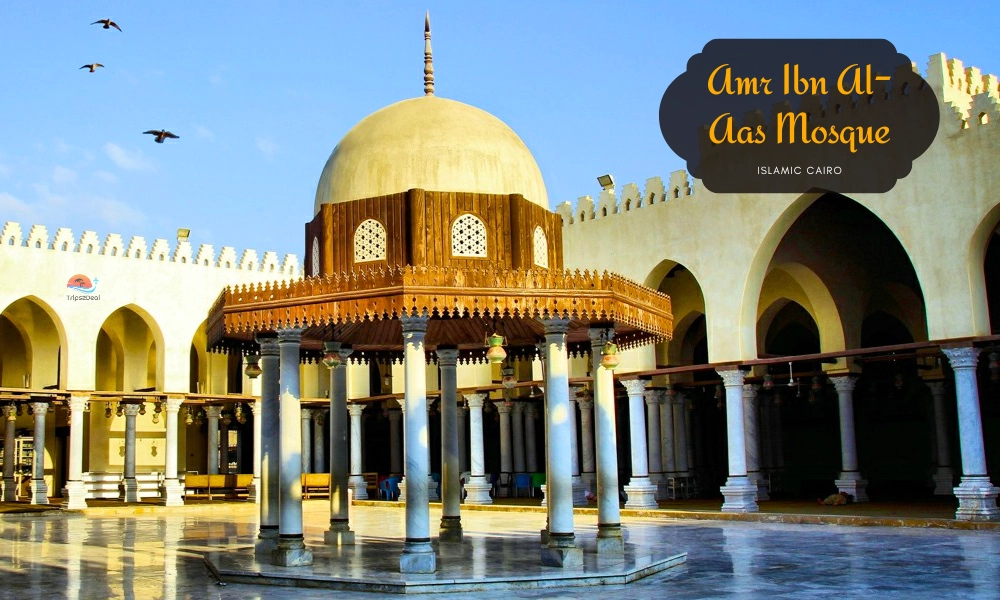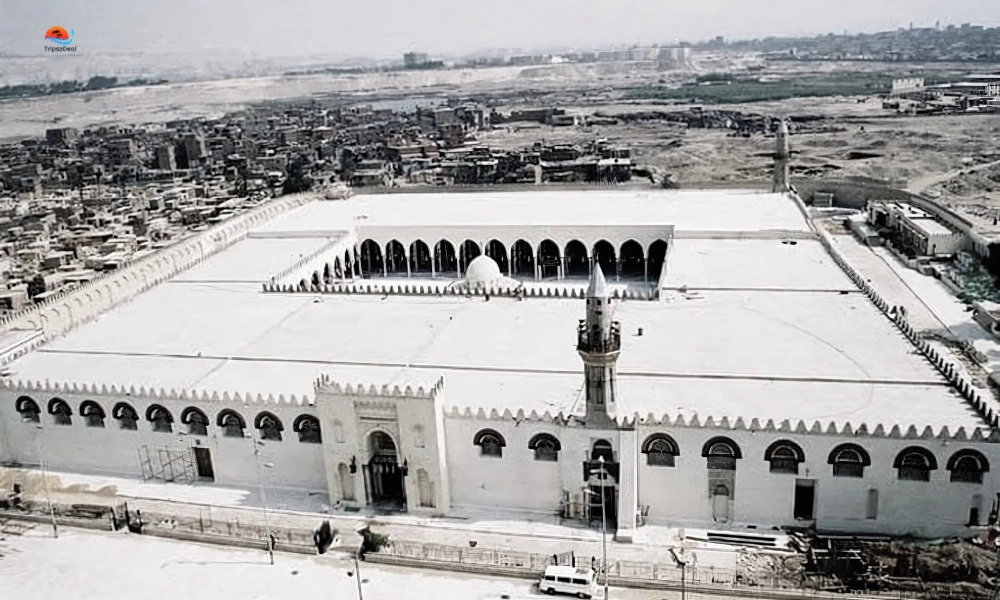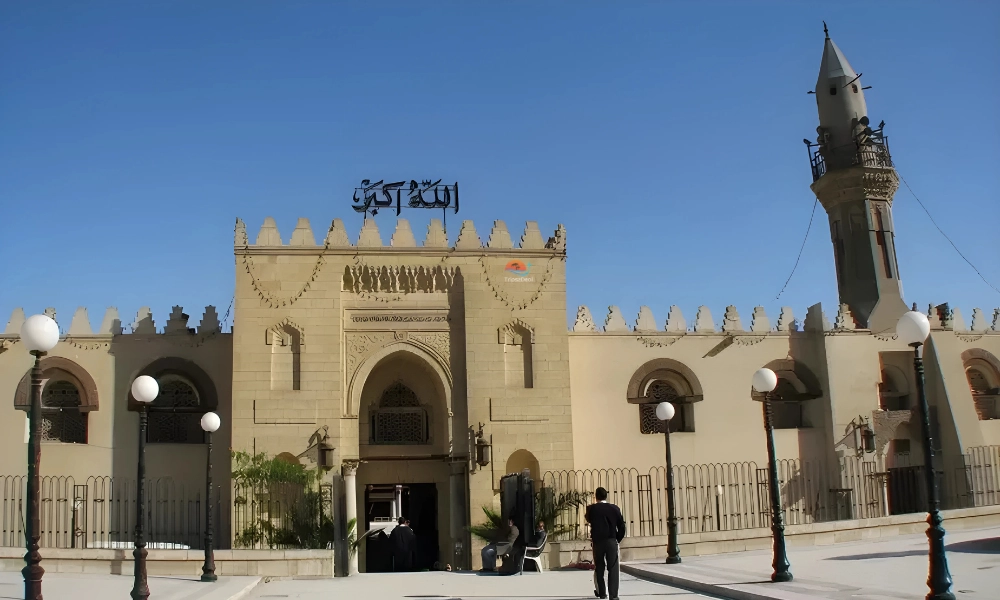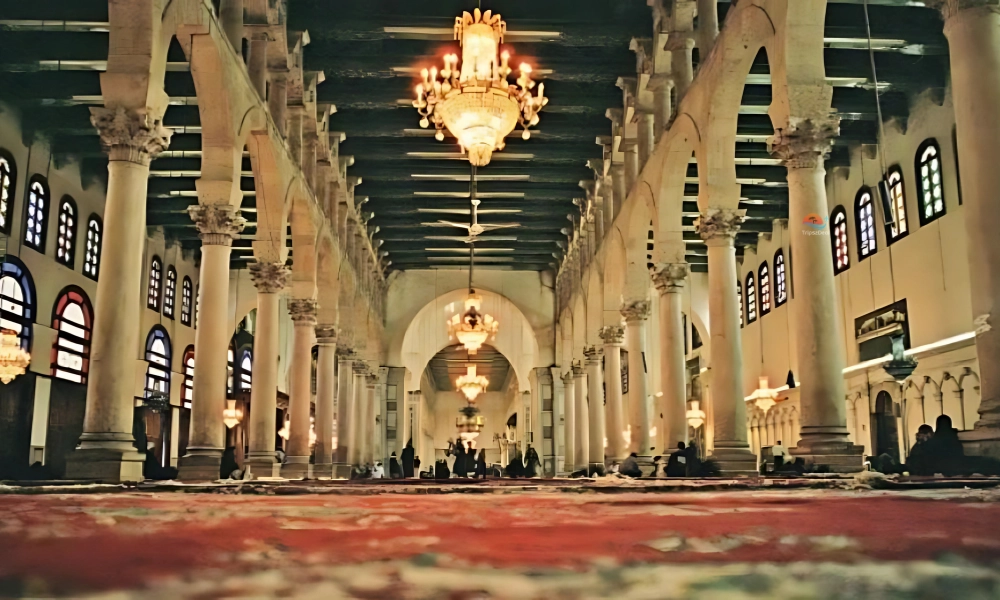Blogs

Amr Ibn Al-Aas Mosque
Imagine you are taking a stroll in Old Cairo’s streets, feeling the historical nostalgia. Suddenly, you stopped in front of a religious landscape. The one that represents the great Islamic history, education, and the center of worship in Africa. Yes, this religious landscape is none other than the Amr Ibn Al-Aas Mosque. It is not only one of the most significant but the first ever mosque built in Egypt, or you can say in all of Africa. Moreover, it also dates back to 641 AD.
It will not be wrong to symbolise it with the heart of Egypt’s story. The story of success, revolutions, decline, and revival. Hence, this is the main reason it has stood as a symbol of Islamic heritage for nearly fourteen centuries. Because it is the birthplace of Islamic Cairo.
That's why when tourists visit it, they automatically get their answer to “Why should we visit it?"
Whether you are a traveller, a history-seeker, or a tourist who loves to explore the ancient culture of Egypt, Amr Ibn Al-Aas Mosque is one of the top-notch mosques, delivering both Islamic architectural and scholarly vibes.
Table of Contents
- 2. Founding of the Amr Ibn Al-Aas Mosque (641 AD)
- 3. What Happened During The Conquest of Egypt and the Establishment of Fustat?
- 4. Historic Expansions and Renovations
- 5. Religious and Cultural Significance Over Time
- 6. Amr Ibn Al-Aas Mosque in the Context of Old Cairo
- 7. Amr Ibn Al-Aas Mosque in Global Recognition
- 8. A Symbol of Islamic Expansion
- 9. Architectural Features of the Mosque Today
- 10. Spiritual and Community Role in Modern Times
- 11. Recent Restoration Efforts and Preservation
- 12. Visiting Amr Ibn Al-Aas Mosque Today
- 13. Interesting Facts and Lesser-Known Stories
- 14. Conclusion:
2. Founding of the Amr Ibn Al-Aas Mosque (641 AD)
The Man Behind Name:
Amr Ibn Al-Aas was famous for his bravery, sharp vision, intelligence, and diplomacy during the reign of the Prophet Muhammad SAW. He has the honor to be a companion of Prophet Muhammad SAW, and was a great militant. In 641 AD, during the reign of Umar Ibn Al-Khattab R.A, Amr Ibn Al-Aas started leading the Muslim conquest of Egypt because of his unmatchable qualities.

3. What Happened During The Conquest of Egypt and the Establishment of Fustat?
During the Battle of Heliopolis, Amr Ibn Al-Aas defeated the Byzantines and founded the city of Fustat. This became the very first capital of Islamic Egypt. Then, later on, he built this mosque, right at the heart of the capital.
What is the significance of the Amr Ibn Al-Aas Mosque?
This mosque holds great significance in Islamic heritage because it is the first mosque not only in Egypt but in Africa as well. When it was made, it felt like it was announcing the great news of the arrival of Islam and the spread of it beyond Arabia.
Original Architecture and Early Design
- Materials and Construction: The first version of the mosque was a simple structure of mud bricks, palm trunks, and thatched palm leaves for roofing.
- Layout: In its very earliest season, this mosque did not have any minarets, domes, or mihrab. As the architect was so simple and generous, the prayer space an open and wide rectangular prayer space facing towards Makkah.
- Community Role: Moreover, besides a place of worship, it is also used for meeting halls, a location for justice hearings, and a school where students learn the Quran and Islamic Shariah.
Moreover, the reason behind this thoughtful design was to represent the true spirit of early Islam. That's why its design conveys the message of unity and spirituality instead of just glamor.
4. Historic Expansions and Renovations
The renovation of the Amr Ibn Al-Aas Mosque over the decades is explained below:
- Umayyad Period (661–750 AD): Expanded with columns, a larger prayer hall, and the first wooden minbar.
- Abbasid Period (750–969 AD): Added minarets and improved decorations.
- Fatimid Period (969–1171 AD): Introduced new arches and marble elements.
- Ayyubid & Mamluk Periods (1171–1517 AD): Renovations emphasized strength and durability.
- Ottoman Period (1517–1798 AD): Continued upkeep but added little new design.
Each dynasty left its mark, turning the mosque into a living museum of Islamic architecture.
5. Religious and Cultural Significance Over Time
For more than 1,300 years, this mosque has been a spiritual compass for Egyptians.
- Center of Worship: This is a center of worship. The Ramadan nights, Eid prayers, Jummah Khutbah, and daily 5 times prayer are all hosted here.
- Hub of Learning: Scholars taught Quran, Hadith, jurisprudence, and Arabic sciences here.
- Role in Dynasties: It was a symbol of legitimacy; every ruler who expanded or restored it tied their authority to Egypt’s Islamic heart.
- Decline & Resurgence: At times neglected, it always revived, standing resilient as Egypt’s identity evolved. The essence of cultural history never faded away.

6. Amr Ibn Al-Aas Mosque in the Context of Old Cairo
This mosque was the true depiction of the development of Old Cairo. That's why it is not isolated. You can see it from here:
- Fustat’s Core: This is the first building ever built, around which several buildings, homes, markets, and streets started growing later.
- Historic Landmarks Nearby: Today, visitors find the Hanging Church, Coptic Museum, Ben Ezra Synagogue, and other Islamic sites nearby, making Old Cairo a true crossroads of civilizations.
- Part of the Islamic Heritage Trail: This is the very first spot to discover the whole architecture and culture of Cairo, Egypt.
7. Amr Ibn Al-Aas Mosque in Global Recognition
Globally, the Amr Ibn Al-Aas Mosque is not only considered the first mosque founded in 641 AD, but a revolution of Islamic heritage, that too at a global level. It is not only a Vario but the symbol of the arrival of Islam in Africa and the landmark that the whole world knows today.
UNESCO and Historic Cairo
Today, the mosque stands proudly within Historic Cairo, a designated UNESCO World Heritage Site. This acknowledgment highlights:
- It has the role of the first mosque in Africa.
- Contribution to the urban and religious growth of early Islamic Cairo.
- Global efforts to preserve its architecture for future generations.
8. A Symbol of Islamic Expansion
Muslims and Historians visit this mosque not only for worship or exploration. But they go to experience the nostalgia of what milestones in Islamic history feel like. The feeling of success, revolution, and development.
- This mosque is an iconic symbol that represents the spread of Islam from the Arabian Peninsula into Africa. This shows how muslims conquer different places with their strong belief.
- This mosque is a remarkable vision of a great military commander of the muslim Conquest of Egypt.

I. Global Academic and Cultural Interest
The Amr Ibn Al-Aas Mosque continues to attract attention on an international scale:
- Experts and professionals show their interest in getting to know about the expansion under the Umayyads, Abbasids, Fatimids, and Mamluks. This enhances their perception and mindset regarding the traditional culture.
- Documentaries and travel shows feature it as a symbol of Islamic Cairo.
- Travel bloggers and photographers showcase its enduring beauty online.
II. A Spiritual Destination
Do you know that muslims do not see it just as a mosque for sightseeing? not only just the muslims of Egypt but worldwide:
- It is a pilgrimage-like experience, connecting them to Islam’s roots in Africa.
- Offers a sense of walking through living history where scholars, rulers, and worshippers once gathered.
This mosque is a treasure piece of gem for muslims on an international scale. This is because there is a mix of spirituality and cultural heritage in it.
9. Architectural Features of the Mosque Today
Though rebuilt many times, the mosque still retains its grandeur and simplicity combined.
- Prayer Hall: Spacious, lined with rows of columns.
- Open Courtyard: A symbol of Islamic architecture, allowing natural light and air.
- Mihrab: Marks the direction of prayer (qibla).
- Minarets: Though reconstructed, they symbolize the call to prayer echoing across Cairo.
- Arches: Elegant yet modest, showing the evolution of design through the centuries.
The interesting fact is, if we find its roots, we’ll find a historical legacy of decades of cultures and spirituality integrating together.
10. Spiritual and Community Role in Modern Times
Today, the Amr Ibn Al-Aas Mosque continues to thrive:
- Daily Prayers & Friday Sermons: Still a functioning mosque, filled with worshippers.
- Religious Events: Especially during Ramadan, it hosts night prayers, Quran recitation, and community iftars.
- Education: Classes in Quran and Arabic are still conducted, keeping its role as a learning hub alive.
- Tourist Attraction: Visitors experience both history and spirituality, standing in Africa’s very first mosque.
11. Recent Restoration Efforts and Preservation
- Challenges: Centuries of use, weather, earthquakes, and urban growth caused significant wear.
- Government Role: Egypt’s Ministry of Antiquities has led preservation projects.
- International Organisations Role: Several recognised organizations, including both local and international, like NGO & UNESCO, made efforts in preserving the Old Cairo’s Islamic monuments. In it, this mosque is included too.
- Enhanced Future Version: In the future, it is planned to upgrade the tourist facilities along with digital guides. Educational exhibitions will be promoted as well. This will help the next generation keep it alive.
12. Visiting Amr Ibn Al-Aas Mosque Today
If you plan to visit Cairo, an old Egypt, you need to keep in mind some particular tips:
- Location: Situated in Old Cairo (Fustat), easily accessible by metro or taxi.
- Best Time to Visit: Morning hours for calm exploration, or Ramadan evenings for a lively spiritual experience.
- Tips for Visitors:
- Dress modestly (as with all mosques).
- Entry is usually free.
- Photography is allowed, but be respectful during prayer times.
13. Interesting Facts and Lesser-Known Stories
- Because of its huge importance, this mosque is well-known as the “Crown of mosques”.
- While choosing its location, Amr Ibn Al-Aas freed his camel and let it roam around. The place where the camel stopped and knelt was the place chosen for it.
- Major scholars like Imam Al-Shafi’i and Ibn Battuta referred to this location in their scholarly books.
- It has been rebuilt so many times that no original part of the 641 AD structure remains, yet its legacy lives on.
14. Conclusion:
In conclusion, the Amr Ibn Al-Aas Mosque not only held the significance of being Egypt’s first mosque but also a gateway to Islam as well. It helped in spreading Islamic heritage in Africa. It shows that Islamic Cairo has always been the one to inspire not only in 641 AD but today as well. The devotion and awe of tourism prove this. In true manners, it is the symbol of Islamic Cairo. Additionally, this mosque helped people to understand the depth of faith, history, and culture globally. It holds value for every person who visits it. If a worshipper visits, then he sees it as a sacred place. If historians go there, it is a priceless record. Similarly, if a traveler travels there, then it is in their must-see place list.



